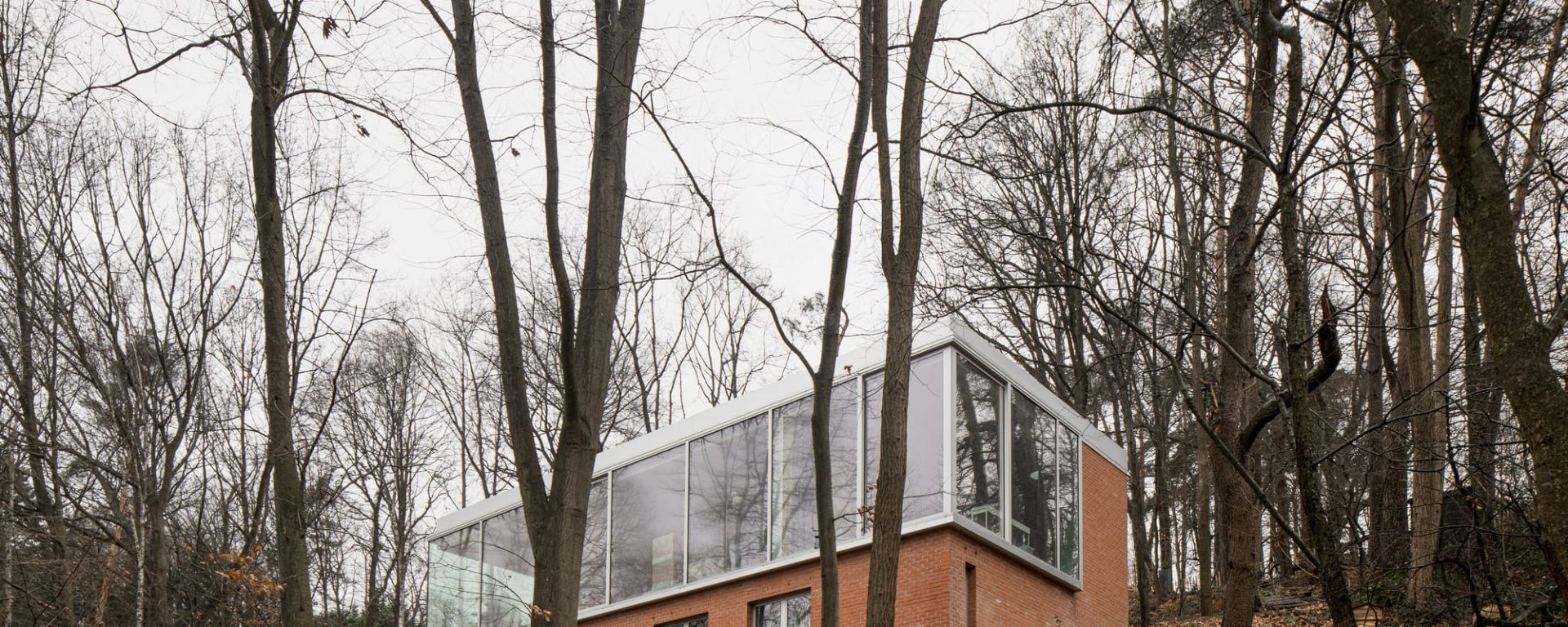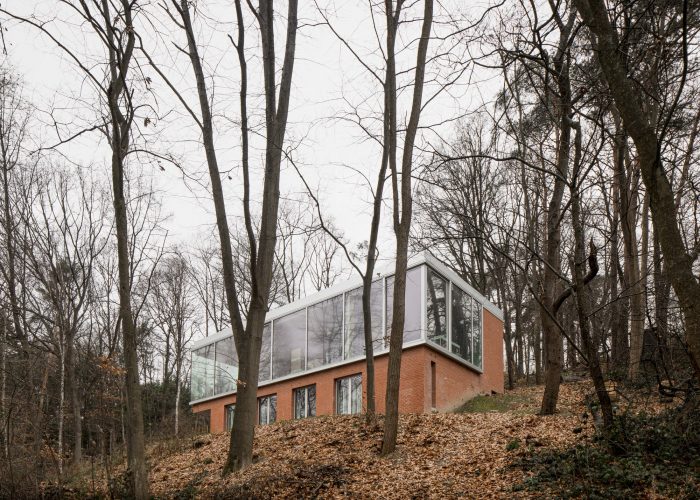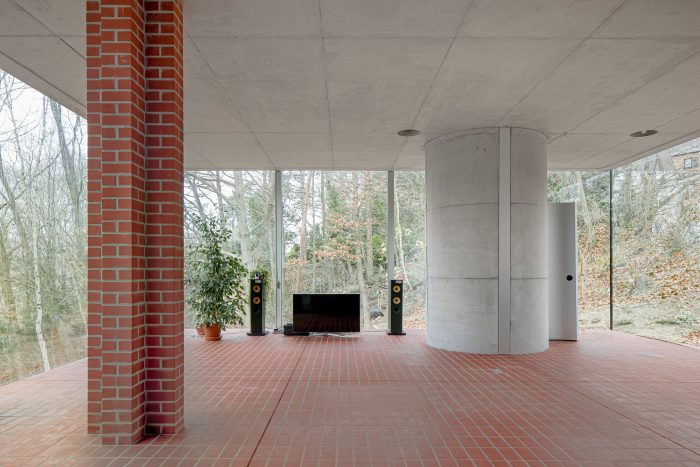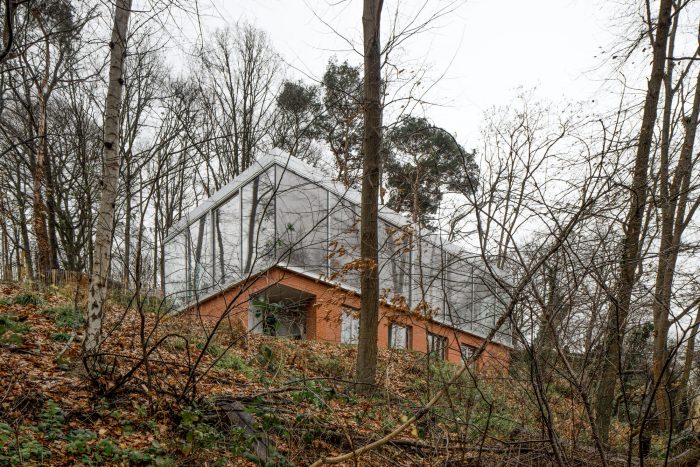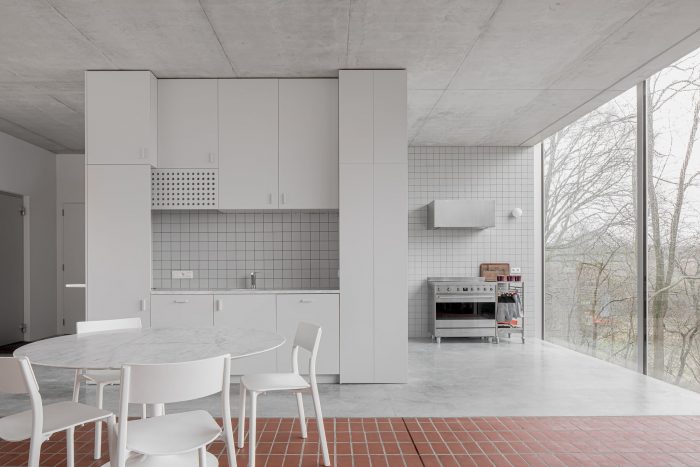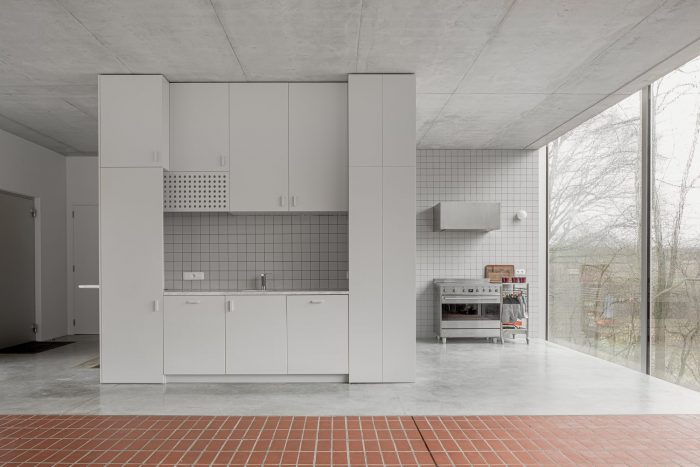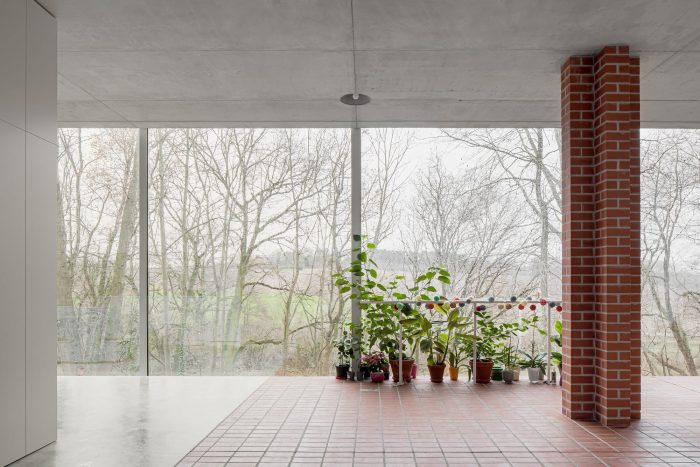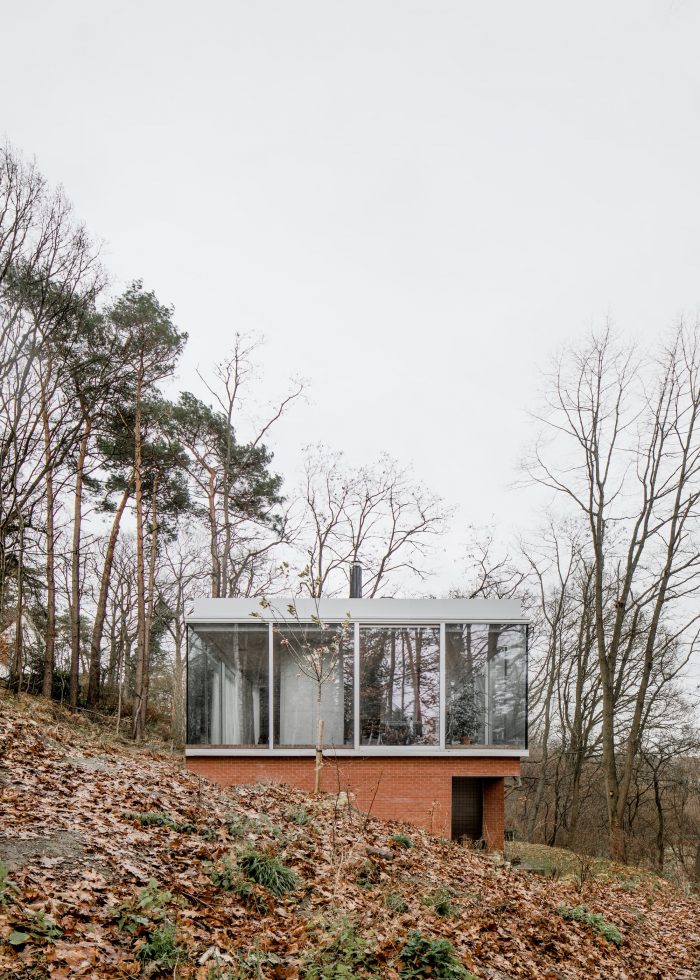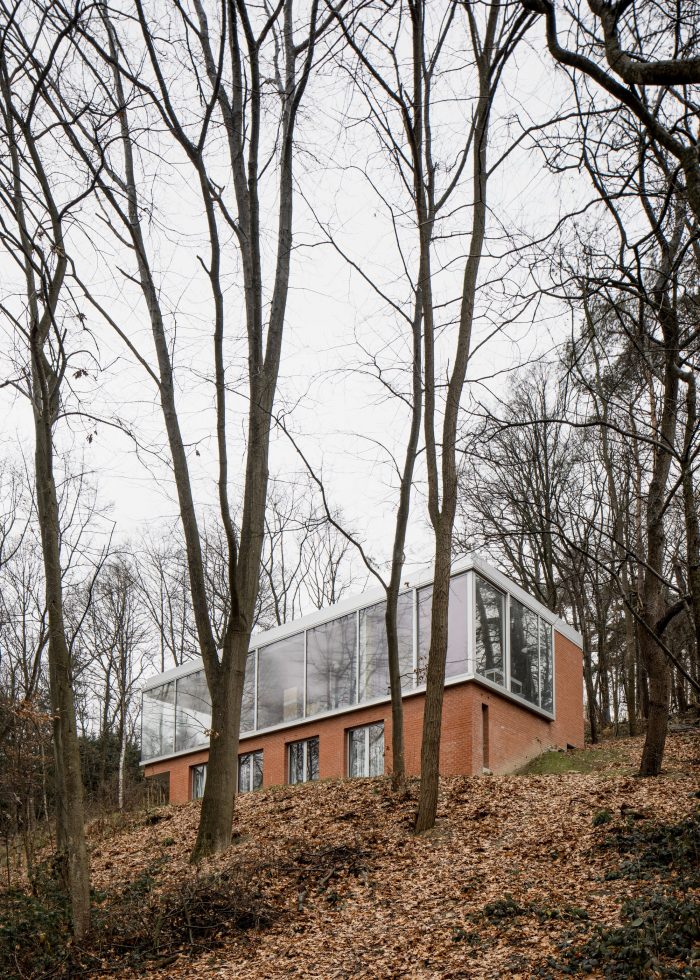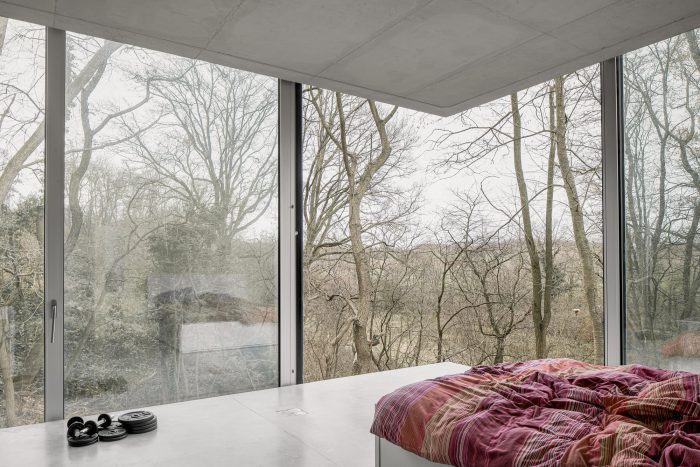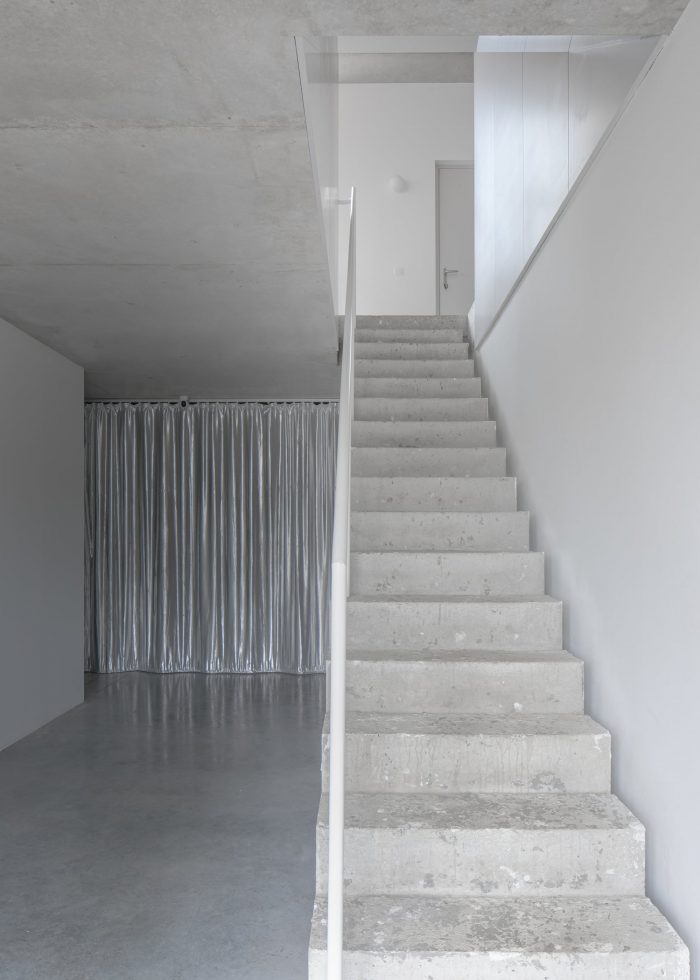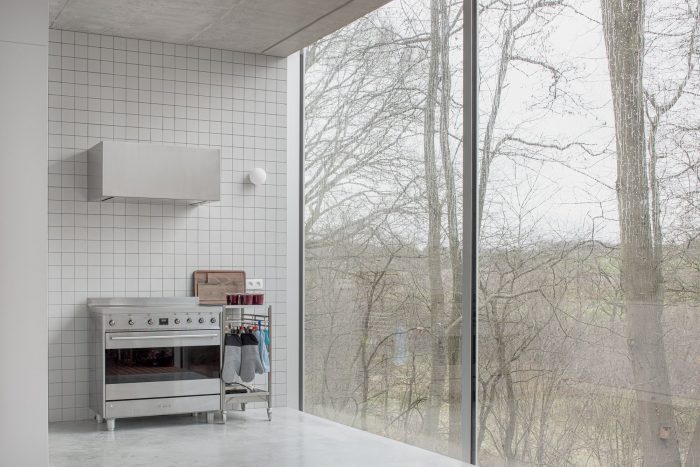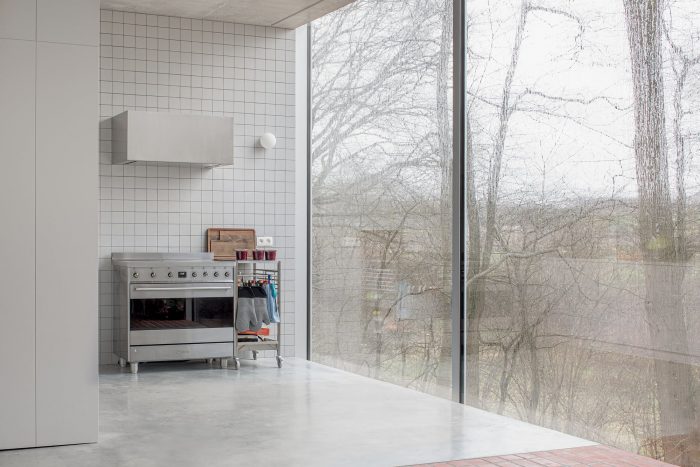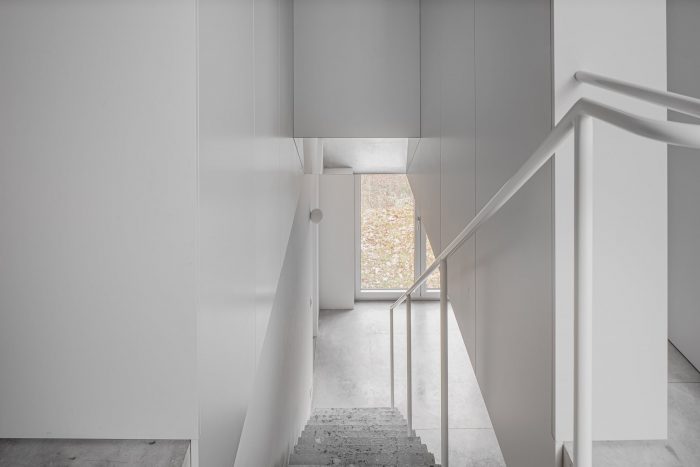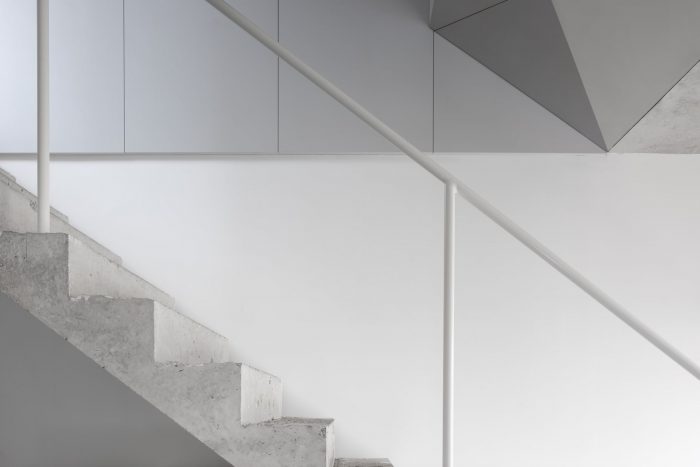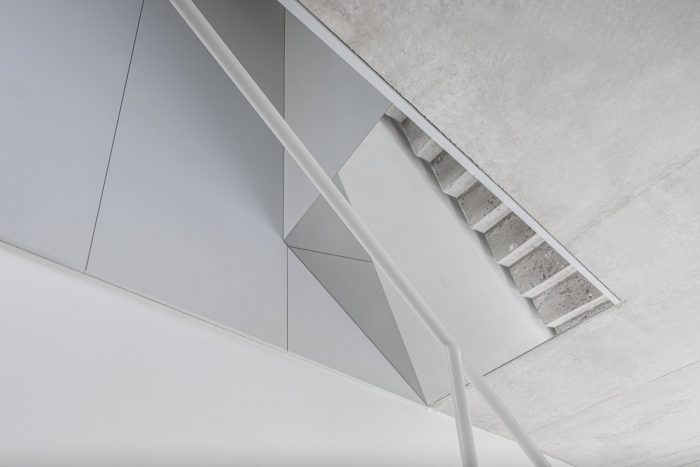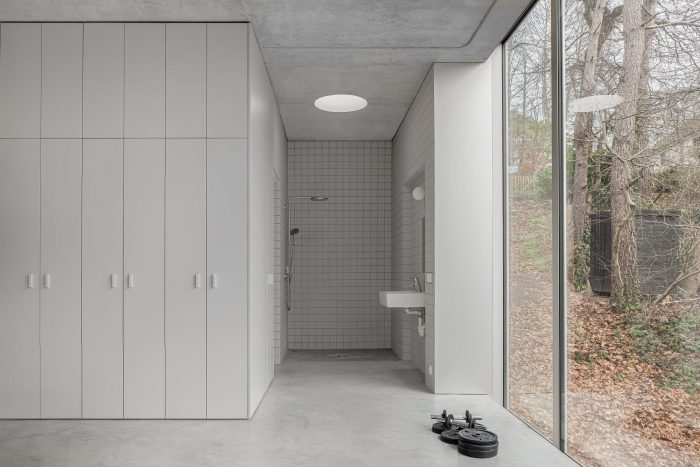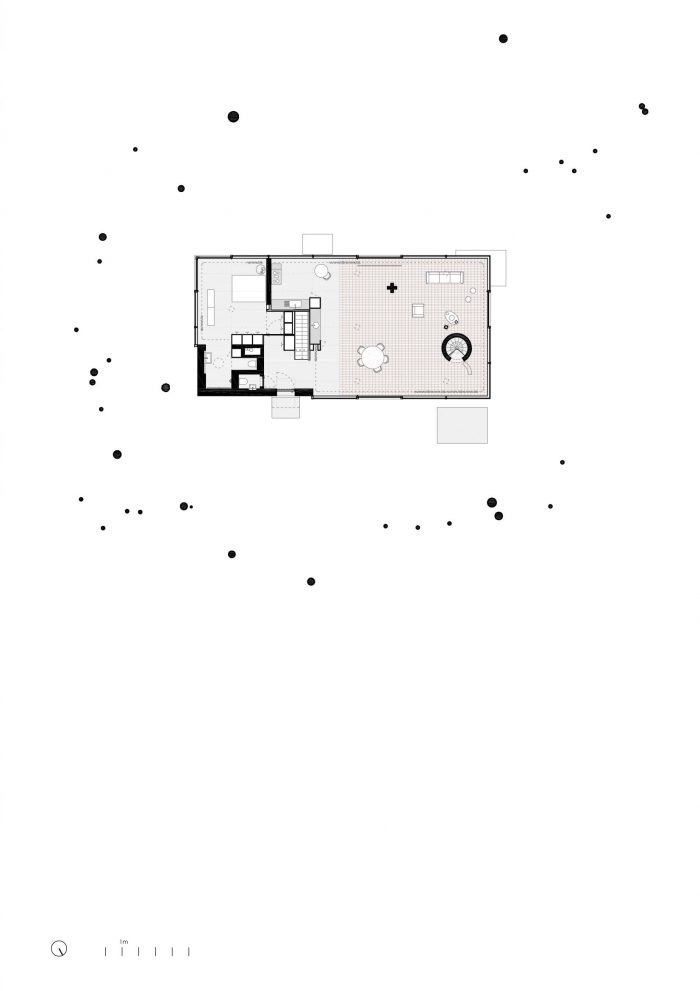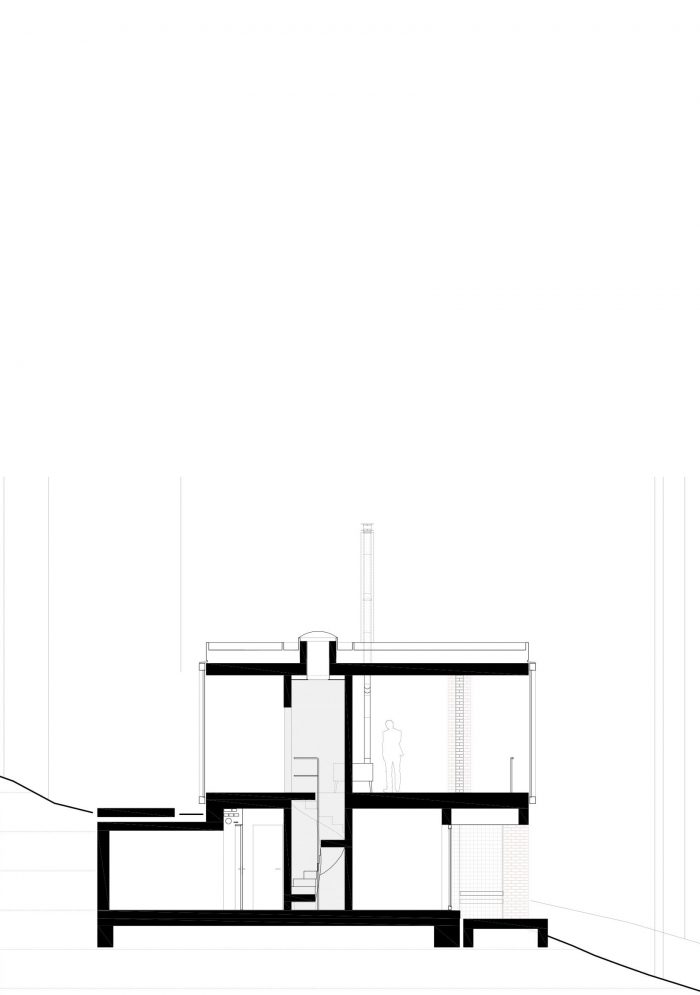在Grez-Doiceau,Philippe Vander Maren和Richard Venlet设计了一个由少数元素组成的房子,它非常关注建筑的元素,但又成功地避免了夸张。对建筑元素的精确决定,应用于一个务实的空间组织,导致了令人印象深刻的复杂性。
In Grez-Doiceau Philippe Vander Maren and Richard Venlet designed a house with a handful of elements that pay much attention to the elements of architecture and yet succeed in avoiding its overstatement. Precise decisions on architectural elements, applied to a pragmatic spatial organization, resulting in an impressive complexity.
好的建筑有能力为日常生活中最平凡的功能创造具体的空间条件。这就是建筑行为变成建筑艺术的地方。购物可以变得不仅仅是购买商品,学生时代可以成为与空间体验有关的记忆,吃一顿美味的饭菜可以完成充分的乐趣。在房子里,家务事同样可以被编排,并影响到生活方式,比在头上有一个屋顶更进一步。另一方面,所有这些体验都可能被一个过于严肃的建筑场景所破坏,它对生活行为施加了夸张的干预。
Good architecture has the power of creating specific spatial conditions for the banalest functions of daily life. That is the point where the act of building becomes the art of building. Shopping can become more than purchasing goods, school years can become memories connected to the spatial experience, and eating a delicious meal can be completed to full pleasure. In a house, the domesticity can equally be choreographed and affect the way of living, going much further than just having a roof above one’s head. On the other hand, all these experiences can be spoiled by an architectural scenography that takes itself too seriously, that imposes exaggerated interventions on the act of living.
House M是Philippe Van der Maren(建筑师)和Richard Venlet(艺术家)之间的建筑合作,是一个项目,它非常关注建筑的元素,但成功地避免了夸张。这不是范德马伦和Venlet第一次合作并达到这种质量,只是,以前的是对现有房屋的翻新。在这些建筑中,他们总是能找到一些反应,并在现有的基础上进行对比性的干预。M屋提供了一个不同的案例,因为它是一个新的建筑,周围没有其他东西,只有树林。
House M, an architectural collaboration between Philippe Van der Maren (architect) and Richard Venlet (artist), is a project, which pays much attention to the elements of architecture and yet succeeds in avoiding its overstatement. It is not the first time that Vander Maren and Venlet worked together and reached this quality, only, the previous ones were renovations of existing houses. In those buildings, they always found something to react to and made contrasting interventions based on the existing. House M offered a different case as it was a new building, surrounded by nothing else than woods.
Vander Maren和Venlet在这个过程中很早就感觉到,在这里寻找对比是没有必要的。他们用少量的材料和精确的决定来构思一个项目,并将其应用于实用的空间组织。然而,他们在建筑元素组合方面的共同精确性使得房屋的简单平面在第三维度上达到了令人印象深刻的复杂性。
Vander Maren and Venlet felt very early in the process that the search for contrast was not necessary here. They conceived a project with a handful of materials and precise decisions and applied it to a pragmatic spatial organization. Yet their shared precision in the combination of architectural elements makes the simple plan of the house reach an impressive complexity in the third dimension.
该项目位于一个有许多树木的倾斜地形上。从通往房子的道路上只能看到一个屋顶,它横跨在一个玻璃盒子上,坐在一个砖头盒子上,后者被塞进斜坡。仔细一看,这个玻璃箱显示出它是一个放置在砖块基座上的玻璃柜。这个基座的墙壁穿过上层透明的玻璃幕墙,砖块水平地延伸,正好覆盖了总楼面的一半,也沿着开放空间中唯一的十字形钢柱爬升。这一层的另一半是混凝土地板,同样的材料横跨整个表面的天花板。从地板到天花板的窗户没有露出水平框架,在角落里,玻璃板相互交接,没有垂直的轮廓,让外部进入。
The project lies on a slanting terrain with many trees. Only a roof is visible from the road that leads to the house, it spans over a glass box sitting on top of a brick box, the latter tucked into the slope. At a closer look, the glass box reveals itself rather as a vitrine placed on top of a brick pedestal. The walls of this pedestal stick through the glass facade of the upper, transparent level, and the brick continues horizontally, covering exactly half of the total floor surface, climbing also along the sole, cross-shaped, steel column in the open space. The other half of this level has concrete floors, the same material spans the ceiling over the whole surface. Floor-to-ceiling windows don’t reveal horizontal frames, on the corners glass plates are meeting each other without a vertical profile that allows the exterior in.
M屋让我想起了许多透明的、现代主义的玻璃屋镶嵌在自然界中的品质。不可避免地,平面图上的十字形柱子让人想起密斯-凡-德罗的柱子。砖砌的下层让人想起菲利普-约翰-儿子的砖屋,它是玻璃屋无声的兄弟姐妹,包含客房和透明体量的技术设备,距离它25米。然而,在M屋,通过让砖头渗透到客厅,巨大体量中的腋下空间实际上是房子的一部分。
House M reminds me of many qualities of transparent, modernist glass houses set in nature. Inevitably, the cross-shaped column on the plan calls Mies van der Rohe’s column into mind. The lower floor in brick reminds of Philip John- son’s Brick House, which is the silent sibling of the Glass House and contains guest rooms and technical equipment for the transparent volume, positioned 25 meters from it. In House M, however, the axillary spaces in a massive volume are literally part of the house by letting the brick permeate the living room.
十字形的柱子也从密斯的柱子中解放出来,因为它被厚厚的砖头包裹着,从砖头基座上长出来。Vander Maren和Venlet重新配置了现代主义的参考资料,并将M之家的建筑从标志性元素的重量中解放出来。他们利用他们为房子设计的每一个部件,为家庭生活制作一个场景,与周围的自然以及自身相关联。但并没有出现过量的材料或姿态,相反,只有五种材料反复出现并承担了不同的功能。
The cross-shaped pillar is also freed from Mies’column as it is wrapped in the thick brick and grows out of the brick pedestal. Vander Maren and Venlet reconfigure modernist references and free the architecture of House M from the weight of iconic elements. They use every component they designed for the house to make a scenography for the domestic life that relates to the surrounding nature as well as to itself. But there is not an overload of materials or gestures, on the contrary, only five materials recurrently occur and take over different functions.
然而,Vander Maren和Venlet的合作最有趣的结果也许是在为建筑体量的每个平面所做的精确组合中找到的:上层带有玻璃角的外墙使花园中的树木成为室内的墙纸,砖砌的外墙成为客厅的地毯,甚至外面的屋顶,在到达时欢迎,提供一个由天窗和竖井组成的圆形体量的配置,完成一个稍大的,包含雨水的低圆:对鸟儿的邀请,以止渴。
Yet the most interesting consequences of Vander Maren and Venlet’s collaboration are perhaps to be found in the precise compositions made for each plane of the architectural volume: the facades with glass-on-glass corners of the upper floor make the trees in the garden into wallpaper for the interior, the brick facade becomes a carpet for the living room, even the roof outside, which welcomes upon arrival, offers a configuration made with circular volumes of skylights and shafts, completed with a slightly larger, a low circle containing rainwater: an invitation to the birds to still their thirst.
如果有那么一刻,家庭生活可以被看作是一出戏,而房子就是它的场景,House M将是如何上演这出戏的无懈可击的示范。在一个好的场景设计中,舞台上的每一个元素都有一个功能,无论是实用的还是叙事的,光线在正确的时刻被引导到相关的位置和数字,所有的视觉都与故事的背景有关,事物之间相互流动,叙事的每一刻都有空间元素的支持。演员以一种明显的方式使用舞台,场景设计为戏剧服务,但它有自己的尊严和特点。在这方面,《M屋》是一个精心构成的、宁静的家庭生活舞台,被大自然所包围,邀请其演员居住。
If, for a moment, domestic living could be seen as a play and a house as its scenography, House M would be the impeccable demonstration of how to stage that play. In a good scenography each element on the stage has a function, be it practical or narrative, the light is directed at the right moments to the relevant spots, and figures, everything visual relates to the context of the story, and things flow into each other and every moment of the narrative is supported with spatial elements. The actors use the stage in an evident way, the scenography serves the play and yet it has its own dignity, and characteristics. In this regard, House M is a meticulously composed, serene stage for domestic life surrounded by nature and inviting its actors to inhabit.
Architects: Philippe Vander MarenArtists: Richard Venlet
Area : 140 m²
Year : 2021
Photographs :Jeroen Verrecht
City : Grez-Doiceau
Country : Belgium

